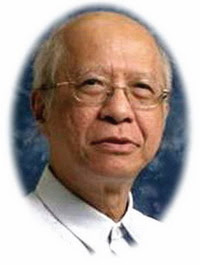Filipina executives praised in China
Filipino musicians, journalists also earn the respect of Chinese people
By ROY C. MABASA
September 3, 2011
(Last of two parts)
MANILA, Philippines — Chinese impressions of the capabilities of Filipino women as leaders have been reinforced by top-level Pinay executives working in China.
The Women in Business Network in Beijing last year named Lara Tiam and Arlene Bantoto as People’s Choice Human Resource Director and Marketing Director of the Year.
Tiam, the Harvard-educated country human resource director of Intel China, is responsible for managing the company’s HR organization across all cities and business groups in China.
With her leadership, Intel China landed on top of the Employee Brand Proposition in a survey conducted by China HR Executive Board.
On the other hand, Bantoto, a magna cum Laude graduate in Business Economics from Ateneo De Manila, is responsible for Nestle’s Mother and Young Child business in China.
She carries with her 15 years of experience beginning with her first stint as marketing trainee in Nestle Philippines.
In May 2011, Judith Los Baños was recognized as Marketing and Communications Director of the Year by the Third Annual Women in Business Leadership Awards.
One of Asian Development Bank’s senior executives in China is a Filipina.
China's music scene also teems with talented Filipinos.
Deejays, singers, dancers, and ballroom dancing instructors from the Philippines are found across the country--sometimes even in unexpected places in China’s frontiers and hinterlands.
When the Philippine Embassy in Beijing visited Urumqi in Xinjiang, the consular team met with eight musicians who are members of two hotel in-house bands.
"It is not hard to imagine Filipinos thriving in localities such as Xinjiang, China’s Muslim inhabited northwestern frontier in Central Asia, as Filipinos working overseas are known for their flexibility in adapting to cultures and imbibing languages," noted the Philippine embassy in Beijing in a statement it issued coinciding with the visit of President Benigno S. Aquino III to China.
The brand of music the Filipino bands play is so popular in China there is an anecdote that an embassy official in Beijing got a frantic call one very late evening from a colleague in the diplomatic community, who said a visiting Asian royalty wanted to be taken to a place where a Filipino band performed.
Recently, Filipino musicians in Dalian established a group called Pinoy Sa Dalian (Pisada) gathering some 200 members that play in various bars and hotels in the city.
Across China, the embassy estimates, there could be at least 3,000 Filipino musicians performing to crowds of locals and foreign expatriates in China.
The embassy also pointed out that, as in the time of 1920s Shanghai, when Filipinos worked for local and international newspapers, Filipino journalists at present are also engaged in writing China’s story.
Florcruz and his contemporaries, Chito Santaromana and Eric Baculinao, have been working in leading international media agencies in China.
The embassy said their perspective come from long years of in-depth interaction with the Chinese people beginning in the 1970s when they spent their youth in the Chinese communes that hosted them after being barred — as student activists — from going back to Manila during Martial Law after a study tour of China.
Benjamin Lim, who heads Reuters, as well as younger Filipino journalists are following in the footsteps of these luminaries in their employment in English language media institutions.












